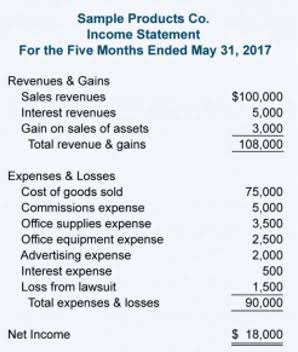
However, if your budget is handled appropriately and all checks are marked as pending, you’ll know not to spend that money. Checks are simple financial tools that depend on both the payor and payee to take action to complete the payment. These laws often require businesses to conduct due net sales diligence, which includes making reasonable efforts to locate and notify the rightful owners before surrendering funds to the state. Financial systems must be capable of tracking such obligations to ensure compliance and avoid oversight.

Unlocking Potential: How In-Person Tutoring Can Help Your Child Thrive

Like business checks, personal checks are generally considered invalid after six months (180 days). Outstanding personal checks can cause budgeting problems, but you may have an easier time reminding a friend or family member to cash a check than a business payee. Fortunately, banks don’t have a legal obligation to honor checks written more than six months in the past. If the old check isn’t six months old, or if you want an extra layer of protection, two strategies can protect you. Call or email payees who fail to deposit checks and ensure that the check was, in fact, received.
How Do I Reconcile Outstanding Checks with My Bank Statement?
As a result, your bank account balance may fall below $0 and incur overdraft fees. It’s possible that the bank could also decline to honor the outstanding check, as well. For payees, uncashed checks can cause financial difficulties, especially if the check represents wages or reimbursements. Payees may face fees if they attempt to deposit a stale-dated check that the bank rejects. Disputes may arise if a payee claims non-receipt or loss of the check, requiring the issuer to issue a replacement, which increases administrative burdens and the risk of duplicate payments. This is why your (or company) bank accounts need to be reconciled with the bank statement.

Be a financially smart family!
When the bank receives the full amount requested, it deposits it into the payee’s account. Additionally, outstanding checks can affect your budgeting and financial planning. You may think you have a certain amount of money available, but if there are outstanding checks that haven’t been accounted for, you could end up overspending.
- When a business writes a check, it deducts the amount from the appropriate general ledger cash account.
- You may think you have a certain amount of money available, but if there are outstanding checks that haven’t been accounted for, you could end up overspending.
- Businesses need clear policies for tracking outstanding checks to mitigate these risks.
- These checks help to reflect financial transactions in accounting records accurately.
- Regardless of the reason, it is crucial to identify outstanding checks and take appropriate action to bring them to resolution.
- For issuers, poor management of these checks can lead to financial and legal consequences.
For instance, the balance sheet may not reflect the true cash position if these checks are not properly accounted for. This can cause discrepancies between the bank statement and the company’s books, requiring adjustments during the bank reconciliation process. Accurate reconciliation ensures financial statements comply with standards like Generally Accepted Accounting Principles (GAAP) or International Keep Records for Small Business Financial Reporting Standards (IFRS).
📆 Date: May 3-4, 2025🕛 Time: 8:30-11:30 AM EST📍 Venue: OnlineInstructor: Dheeraj Vaidya, CFA, FRM

For example, voiding a check without notifying the payee could result in claims for non-payment. This is particularly critical for payroll checks, where labor laws mandate timely payment to employees. Businesses rely on precise cash flow projections for investments, expenses, and operational strategies. An uncashed check can distort these projections, causing businesses to misjudge their financial position.
- This is especially problematic for small businesses with tight margins that depend on accurate data to sustain operations.
- By tightening internal controls and improving the check issuance process, a company can minimize the occurrence of outstanding checks.
- If the check is older than six months, the check may be stale or void.
- The payee’s bank will request money from your bank, and the transaction concludes when your bank sends funds to the payee’s bank.
- Adhering to these practices enhances financial control and transparency, reduces errors, and promotes efficient cash flow management.
- A well-managed bank account is a stepping stone toward a secure financial future.
- Reconciling outstanding checks is a critical part of ensuring accurate financial records and tracking cash flow effectively.
- Welcome to the world of accounting, where numbers rule and financial transactions must be meticulously tracked and recorded.
- Keeping track of multiple uncashed checks over a long period of time makes it easier to accidentally spend the money that was set aside for a check and incur overdraft fees.
- Accounting inconsistencies may arise if outstanding checks are not reported and tracked in the appropriate manner.
A well-managed bank account is a stepping stone toward a secure financial future. Advanced accounting software can streamline the recognition of outstanding checks. Programs like QuickBooks, Xero, and Sage offer features that automatically match issued checks with those cleared by the bank, flagging any remaining as outstanding. This automation aids in reducing human error and ensures a more efficient reconciliation process. Additionally, these tools can generate reports that provide insights into the age and volume of outstanding checks, which can be indicative of broader financial management issues. When preparing financial statements, one doesn’t directly outstanding checks add outstanding checks to the balance sheet.
